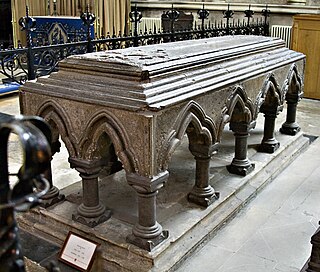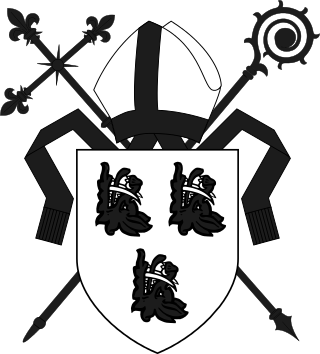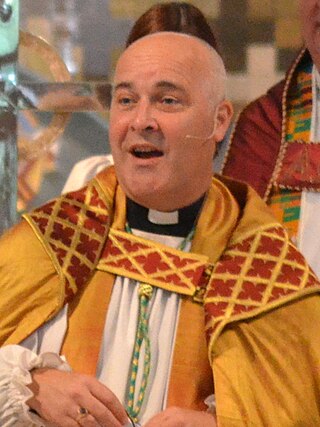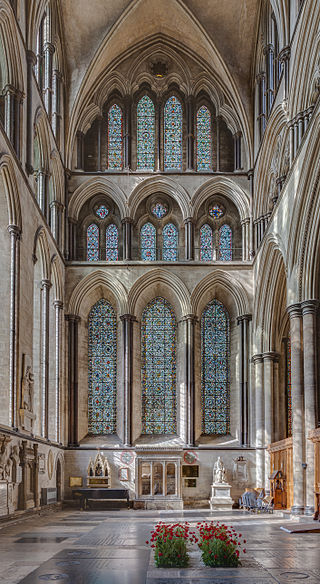Related Research Articles
Michael Northburgh, otherwise Michael de Northburgh (Northborough), was the Bishop of London between 1354 and his death in 1361. He was the nephew of Roger Northburgh, Bishop of Coventry and Lichfield.
Philip of Poitou was Bishop of Durham from 1197 to 1208, and prior to this Archdeacon of Canterbury.

Sewal de Bovil was a medieval Archbishop of York.
Henry of Newark was a medieval Archbishop of York.
Alexander Neville was a late medieval prelate who served as Archbishop of York from 1374 to 1388.

Lawrence Booth served as bishop of Durham and lord chancellor of England, before being appointed archbishop of York.

The Archbishop of York is a senior bishop in the Church of England, second only to the Archbishop of Canterbury. The archbishop is the diocesan bishop of the Diocese of York and the metropolitan bishop of the province of York, which covers the northern regions of England as well as the Isle of Man.

The Bishop of Worcester is the head of the Church of England Diocese of Worcester in the Province of Canterbury, England.
The Dean of York is the member of the clergy who is responsible for the running of the York Minster cathedral. As well as being the head of the cathedral church of the diocese and the metropolitical church of the province, the Dean of York holds preeminence as the Province of York vicar.

John Booth was a 15th-century English prelate who held numerous appointments in the church and royal service.
William Langton was a medieval English priest and nephew of Archbishop Walter de Gray. William was selected but never consecrated as Archbishop of York and Bishop of Carlisle.
Nicholas Bubwith (1355-1424) was a Bishop of London, Bishop of Salisbury and Bishop of Bath and Wells as well as Lord Privy Seal and Lord High Treasurer of England.
Robert de Chauncy was a medieval Bishop of Carlisle.

John Arundel was a medieval Bishop of Chichester.

William of Louth, also known as William de Luda was a medieval Bishop of Ely.
Thomas Kempe was a medieval Bishop of London.

John Blyth or John Blythe was a medieval Bishop of Salisbury.

Richard Marsh, also called Richard de Marisco, served as Lord Chancellor of England and Bishop of Durham.
Henry Bridgeman was an Anglican clergyman who served in the Church of England as the Bishop of Sodor and Man from 1671 to 1682.
Charles Booth, D.C.L. was a sixteenth-century clergyman who served as the Bishop of Hereford from 1516 to 1535.
References
- Allen, P.S., "Bishop Shirwood of Durham and his library", English Historical Review 25 (1910), 445–56.
- Fryde, E. B.; Greenway, D. E.; Porter, S.; Roy, I. (1996). Handbook of British Chronology (Third revised ed.). Cambridge: Cambridge University Press. ISBN 0-521-56350-X.
- Harris, Jonathan, "Greek scribes in England: the evidence of episcopal registers", in Through the Looking Glass: Byzantium through British Eyes, ed. Robin Cormack and Elizabeth Jeffreys (Aldershot: Ashgate, 2000), pp. 121–6. ISBN 978-0-86078-667-2
- Jones, B. Fasti Ecclesiae Anglicanae 1300-1541: volume 6: Northern province (York, Carlisle and Durham): Archdeacons: Richmond. Institute for Historical Research. Archived from the original on 9 March 2012. Retrieved 16 August 2010.